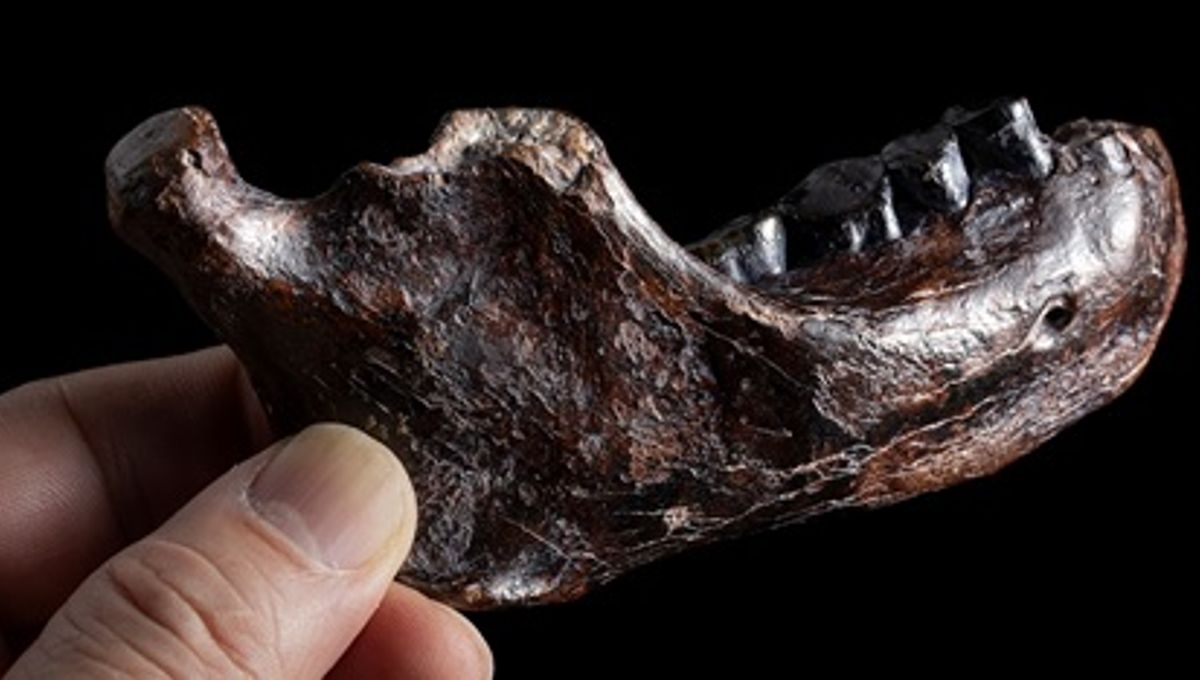
An ancient human jawbone dredged from the bottom of the Taiwan Strait has been confirmed as a Denisovan fossil, proving that this enigmatic extinct human species once lived all over Asia. Recovered from a depth of between 60 and 120 meters (197 to 394 feet) in the Penghu Channel, the prehistoric mandible was initially retrieved by fishermen but has now proved instrumental in enabling researchers to piece together the history of one of our closest human relatives.
First identified in 2010 from bones found in Denisova Cave in the Altai Mountains of Siberia, Denisovans are a sister lineage of modern humans that interbred with both Neanderthals and Homo sapiens before disappearing tens of thousands of years ago. The genetic traces of these primordial hook-ups can still be seen in the genomes of East Asians today, suggesting that Denisovans probably inhabited a substantial portion of the Orient.
However, aside from Denisova Cave, the only other site to yield Denisovan fossils is located on the Tibetan Plateau. This frustrating lack of physical evidence has made it impossible to trace the contours of the species’ range, which is why the new discovery is such a game-changer.
Picked up some 25 kilometers (15.5 miles) off the coast of Taiwan, in an area that was part of the Asian mainland during the Pleistocene, the Penghu fossil proves that Denisovans were also present around the tropics.
Located approximately 4,000 kilometers (2,485 miles) southeast of the Denisova Cave, the jawbone is one of many specimens from around Asia that displays Denisovan-like morphology. However, identifying an ancient species from a fossil can be difficult as it’s often impossible to extract any DNA – as was the case with the Penghu mandible.
Denisovan mandibles were, for sure, very robust, had very big teeth
Dr Frido Welker
To get around this, the authors of a new study used paleoproteomic techniques to analyze the proteins in the bone and tooth enamel. This enabled them to extract 4,241 amino acid residues, two of which were identified as Denisovan-specific.
Speaking to IFLScience, study author Dr Frido Welker explained that the confirmation of this fossil as Denisovan helps to “paint a picture of a very adaptable hominin species on the eastern end of Eurasia.”
“When we think about the environments and climates [where Denisovan fossils have been found], we have the Altai Mountains, the Tibetan plateau and vastly warmer and more humid environment that was present in the Taiwan Strait, which at the time was mainland East Asia,” says Welker. “This signals a huge ability to adapt to very different environmental conditions, and survive in all those places.”
What’s more, because the Tibetan assemblage also contains a mandible, it’s now possible to speak with more confidence about Denisovan morphology. Specifically, the researchers say that it’s becoming clear that this species had chunkier dental hardware than either Neanderthals or modern humans.
“Denisovan mandibles were, for sure, very robust, had very big teeth, and this is true for both the mandibles that we have now,” says Welker. “And what I think is exciting in this particular study is that we have studied the dental enamel of the teeth as well, and from that, we can deduce that this individual is a male individual.”
“Of course, in some great ape species, but also in some extinct hominid species, there’s a big dimorphism between male and female individuals, including morphological traits. So we don’t know if this robustness is a Denisovan trait or a male Denisovan trait,” explains Welker. “This is something that requires further fossil evidence.”
In terms of the bigger picture, Welker says that the methods used to identify the Penghu jawbone as Denisovan could now be applied to other ancient human fossils from across Asia in order to get a better picture of exactly where and when this species lived. Unfortunately, though, attempts at direct uranium dating of the Taiwanese jawbone were unsuccessful, which means we can’t say precisely how old it is – although the researchers say this specimen has a likely age range of 10,000 to 70,000 years or 130,000 to 190,000 years.
“We know from genetic studies that some East Asian populations carry some Denisovan ancestry in their genome, so there must have been sexual intercourse and exchange of genes in our direction,” says Welker. “With paleoproteomics and genetic methods, I hope that in the future we can better pinpoint where and when that happened.”
The study is published in the journal Science.
Source Link: We’ve Found Another Denisovan Fossil – At The Bottom Of The Sea!